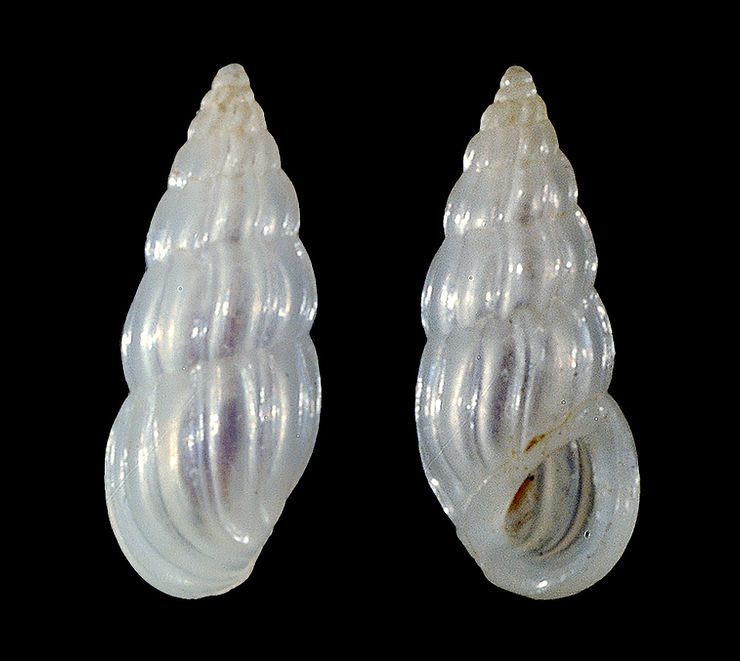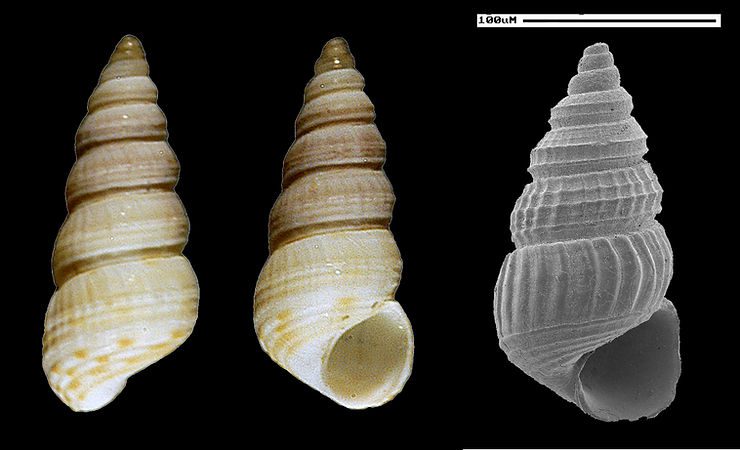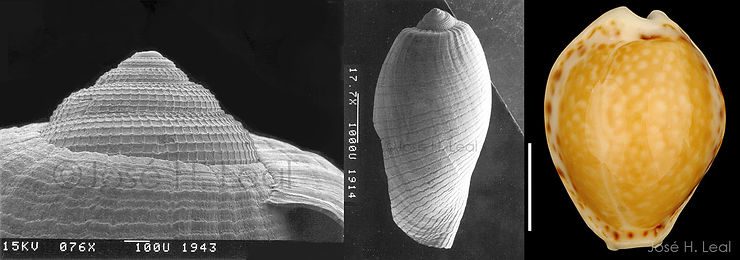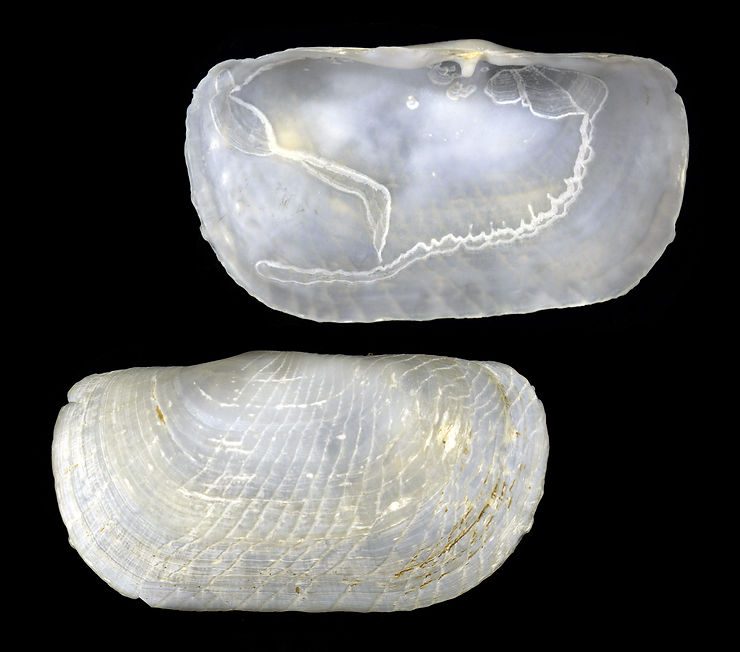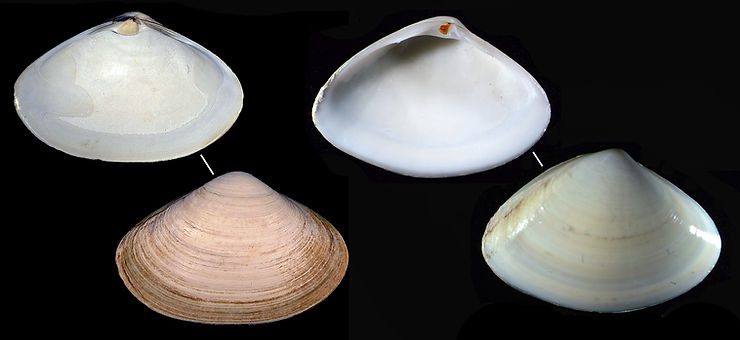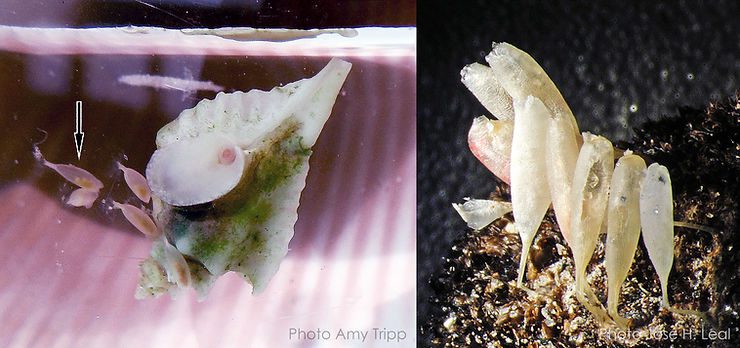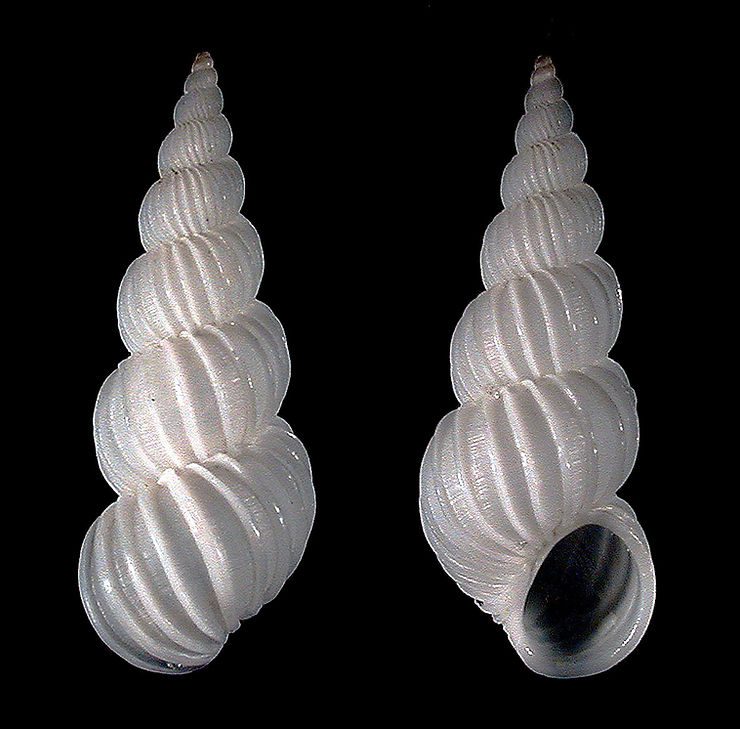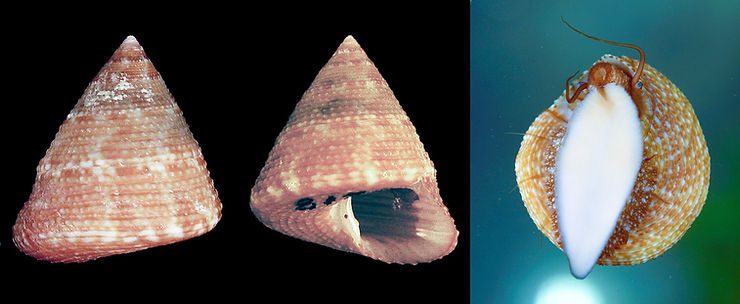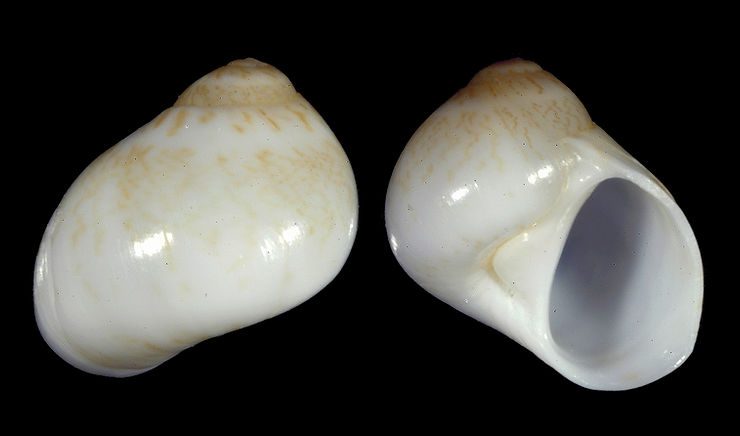
The Miniature Moon Snail
The Miniature Moon Snail, Tectonatica pusilla (Say, 1822) is a member of the Moon Snail family Naticidae, which includes the locally common Shark Eyes (two species) , and the not-so-common, but not too rare, Colorful Moon Snail. Miniature Moon Snails are also found locally, but are much rarer than those other members of the Naticidae family. They are also much smaller, with adult shells reaching only about 8 mm (about 1/3 inch). The shells have a color pattern of pale, wavy lines that is more pr
